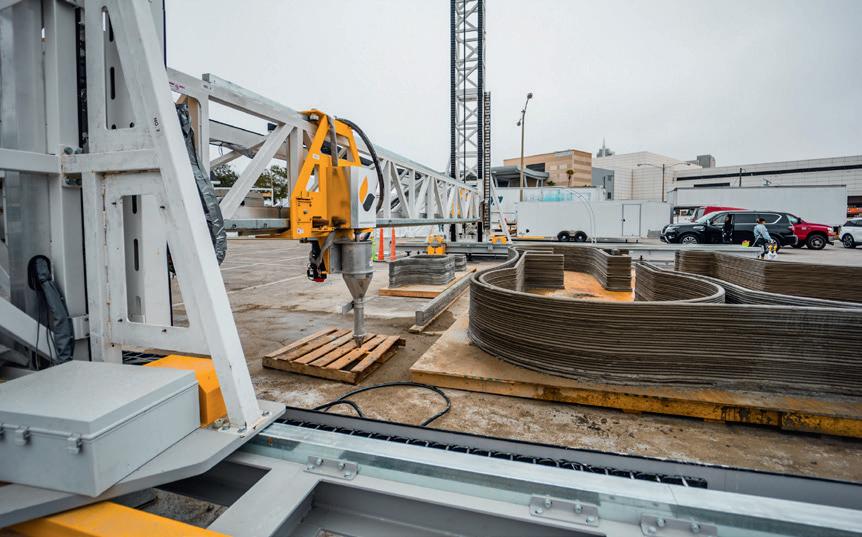
2 minute read
15 YEARS OF ARTEC 3D
TCT: Can you recall what the technology landscape was like when you founded Artec 3D?
AY: Artec began as a typical start-up in San Diego, California in 2007. The impetus for the company was simple - we wanted to make 3D scanning technology as accessible and easy-to-use as a home video camera or a smartphone.
Everything on the market at that time was bulky and involved multiple cameras, various moving lasers, intricate magnetic fields, or other complex setups. We wanted to deliver simplicity and ease, without sacrificing precision. We created the firstever handheld 3D scanner that worked as a standalone device.
TCT: How has it changed in that time?
AY: The last 15 years have given us opportunities to solve a lot of technological challenges. We’ve introduced new business models, made a lot of breakthroughs, and invested in a lot of R&D. One of the biggest success points with the launch of Artec Leo [in 2019] was its ability to process everything in real time. Leo has a feedback loop in the form of a touchscreen integrated into the scanner itself. That was ground-breaking at the time. Previously, scanners behaved like film cameras; you captured an object blindly and had to wait until the frames were processed in the lab to see if the scan was successful. Introducing Leo to the world of 3D scanners felt a lot like introducing the first digital camera in a world of film cameras, and it revolutionized the industry.
TCT: Artec 3D’s technology has seen a lot of success in conservation. Can you talk about the impact 3D scanning has had on how we protect and analyze ageold artefacts?
AY: One example is the analyzation of inscriptions on made on ancient bones originating in China and East Asia. These ‘oracle bones’ have a history of more than 3,000 years and hold key insights about the development of various disciplines such as linguistics, history, astronomy, agriculture, and medicine from centuries past. Previous methods required 'rubbing’ impressions of the inscriptions from the bone surfaces using water, paper and ink, and were damaging and painstaking. But using the Artec Spider handheld scanner, researchers achieved high-precision digital archives of oracle bone surface details for further analysis – and got the added benefit of sharing the 3D models with colleagues and other organizations.
TCT: Can you talk about the importance of embedding 3D scanning technologies into end-to-end manufacturing processes?
AY: There are crucial applications of 3D scanning technology within manufacturing processes. One example is additive manufacturing. You scan an object being built and use those scans to 3D print parts that fit seamlessly into the base structure.
For damaged parts or products, applying the 3D-scan-and-print method means you only need to reproduce the damaged area rather than replace the entire part and waste the functional parts of it. This process is much more sustainable than traditional methods which involve conveyors, an overproduction of spare parts, and unnecessary waste due to trimmings or material excess. This enables completely new workflows that are economically and environmentally sustainable.
Another application is quality control. 3D scanning provides a faster, more accurate method of ensuring products are up to par throughout every stage of the manufacturing process. Accurately identifying imperfections via 3D scanning early on saves time and costs further along the processing supply chain.
TCT: Where does 3D scanning go next?
AY: One area we see the industry leaning more into is artificial intelligence (AI). Applying AI is key in processing and interpreting the data a scanner collects, and Artec is fortunate to have had a very strong AI team from the beginning. We helped Apple create their proprietary Face ID technology, so we’ve been on the turning point of AI from the get-go.
Artec 3D is committed to making its technology ever-more pervasive in fields that can benefit from reliable, easy-to-use, yet still ultra-precise scanning. We collaborate with organizations that use our scanners to help people – whether that be in the form of lifechanging prosthetics, crime reduction and prevention, or accessible education. We look forward to continuing this work and seeing how 3D scanning continues to open up endless opportunities in the realms of science, history, medicine, archaeology, and sustainability.









